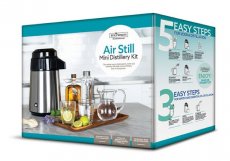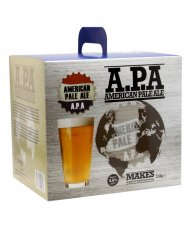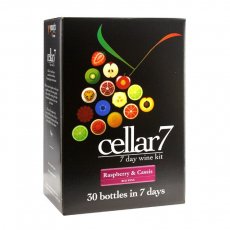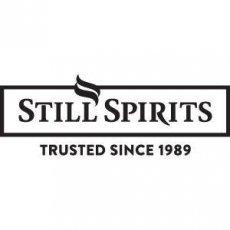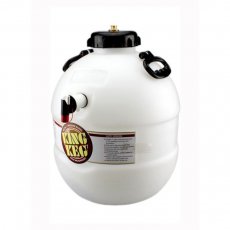Home Brewing Beer
How to brew your own beer, can be extremely easy or on the other hand quite technical.
It will all depend on the method of your choice. If you decide to brew your own beer from a kit this will be reletively easy, however, brewing from scratch, wil be be more complex, depending on the recipe you select or the beers you want to make.
The three ways on how to brew your own beer;
1. Brew your own beer from beer making kits. (Very easy.)
2. Using malt extracts some grains and hops. (Quite easy.)
3. Brewing from scratch, using grains and hops. (More technical.)
1. Using a beer kit. (Beginners)
If you have never brewed beer before, its recommended to purchase a beer starter kit, which includes all the necessary equipment required to start you on this fascinating and enjoyable hobby.
Your next task is to choose a beer kit. Choose a beer kit that appeals to you. Brew Marts advice is to start with a style of beer you know you like. However, don't get lulled in to direct comparisons. Even if the kit is a commercial recipe, the water or the temperature will be different, so there will be subtle flavour variations.
There are different qualities of beer kits too. A good indicator of quality is the amount of hopped malt extract they contain. The more malt, generally, the better the quality. There are currently two notable exceptions. These are the Coopers and Mangrove Jack's ranges, where they have used good quality yeasts.
The one can beer pack will produce a lighter-bodied pint and will require additional brewing sugar. You can swap the brewing sugar for malt extract to add body and malt character.
The two can beer pack produce fuller-bodied beers and needs no extra brewing sugar or malt.
All beer packs have concise and clear instructions which are easy to follow and produce consistent results; they all require the same techniques and equipment.
Kitsntain is a concentrated, hopped liquid malt extract, to which water is added to create a wort (the name for an unfermented beer liqueur).
Add your yeast, which will start to ferment almost immediately and continue fermentation for several days, changing the sugars into alcohol.
The fermented liquid (beer) is then stored in a bucket and allowed to clear before racking off and bottling or barreling.
Adding a small amount of brewing sugar or malt extract into the bottles or the barrel is necessary for pressurising the vessel. Adding extra sugar or malt to ferment produces CO2, which creates pressure and gives the beer its fizz.
Home brew beer kits usually take about two weeks from start to drinking, although most beers will improve with age.
The basic technique is as below (however, do check pack instructions as each beer kit may differ slightly):
1. Position the cans of extract in warm water for 5 mins to soften the malt extract and make it easier to pour out.
2. Sterilise the fermenter/bucket and empty the can(s) into the bucket, then add a little boiling water to the cans, rinse out and add to the fermenting bin to get as much malt extract out as possible.
3. Add additional brewing sugar or Spraymalt (if required).
4. Boil 6 pints of water, and then stir into the fermenter until all the ingredients are dissolved.
5. Once all the ingredients are dissolved, top up to 23 Litres with cold water and add any other additives supplied with the pack (i.e. hops, oak chips etc.).
6. Sprinkle beer yeast on top and stir.
7. Half fill an airlock with water and fit on to the bucket lid and fit on the fermenter. Position the fermenter in a warm place, not in direct sunlight, for approx 6-10 days.
8. Check the airlock until bubbles have ceased (if using a hydrometer when gravity remains constant).
9. Rack Off. (This is a brewing term that means decant.)
10. Transfer to Bottles or a Barrel and add sugar for secondary fermentation
11. Keep the beer somewhere warm (room temperature) for two days, then store somewhere cool for 2-3 weeks until the beer has cleared.
Drink and enjoy.
The grain and hop method uses the same basic techniques as above; however, you prepare the wort from ingredients instead of using a concentrate (beer kit).
Boil the water, malt extract, hops for approx 1 hour, then cool before adding the beer yeast.
The grain and hop method requires a large pan and strainer in addition to the necessary equipment needed for homebrew beer kits.
You can choose and buy packs of extract, hops, and yeast, then follow a recipe.
There are many different recipes to follow, and you can add herbs and spices to create unique blends.
There is a vast range of hops which all have their distinct flavour and taste.
This method is about the same cost as using a premium beer pack, but you have the flavour control and satisfaction of creating your recipes.
Full mash brewing follows the same principals as brewing from extract, but you create the wort from malted grain rather than malt extract. Full mash is the method used by professional brewers to produce commercial beers. The malted grains, hops, and yeasts you need will depend on the type of brew you wish to create. Therefore it is recommended that brewers purchase a brewing book with all the required information and some essential recipes to follow to get you started.
Because you are creating your extract, not buying it – you will require extra equipment. The additional equipment needed for brewing from grain are;
* A Mash tun or boiler
* Mashing and sparging bags
* Muslin Bags
* Stainless Steel beer paddle
* Wort Chiller
All grain brewing is the most technically challenging method.
However, it gives you the most control over your finished brew.
After the brewing equipment's initial investment, all-grain brewing is the cheapest way to brew your beer.
Brew Mart do not recommend this method for a beginner, and many homebrewers never move on to all-grain brewing being perfectly happy using extract or beer kits.
Tips to brew your own beer:
1. Keep clean – sterilise all utensils that touch the beer as bacteria's infections are the greatest threat to beer brewing.
2. When using tap water, treat with ½ a crushed Campden tablet per 25L to remove the chlorine. Just combine the water and tablet, stir and leave for 5 mins before using.
3. Have Patience. Brewing beers require time, so don't rush things. Leave for at least four weeks after bottling, which allows the beer flavours to intensify.
4. Ferment at the right temperature and away from direct sunlight. Most ale yeast ferment between 18 – 22 c and keep the temperature as constant as possible for best results.
5. If bottling – use a second fermentation bin fitted with a little bottler. Mix all the priming sugar with some boiling water, add to the second ferment bin, then rack the beer and bottle using the Little Bottler.
The Little Bottler avoids having to prime each bottle and ensure the brewing sugar is sterile and evenly mixed. It also makes bottling much easier to do.
6. Incorporate oxygen into the wort before adding the yeast by giving the wort a good stir. Doing this will help the yeast get started more quickly.
7. Relax and enjoy your efforts. Brewing beer is easy, and reasonably hard to make a mistake.
Check out all brew Mart's home brew hints & tips

